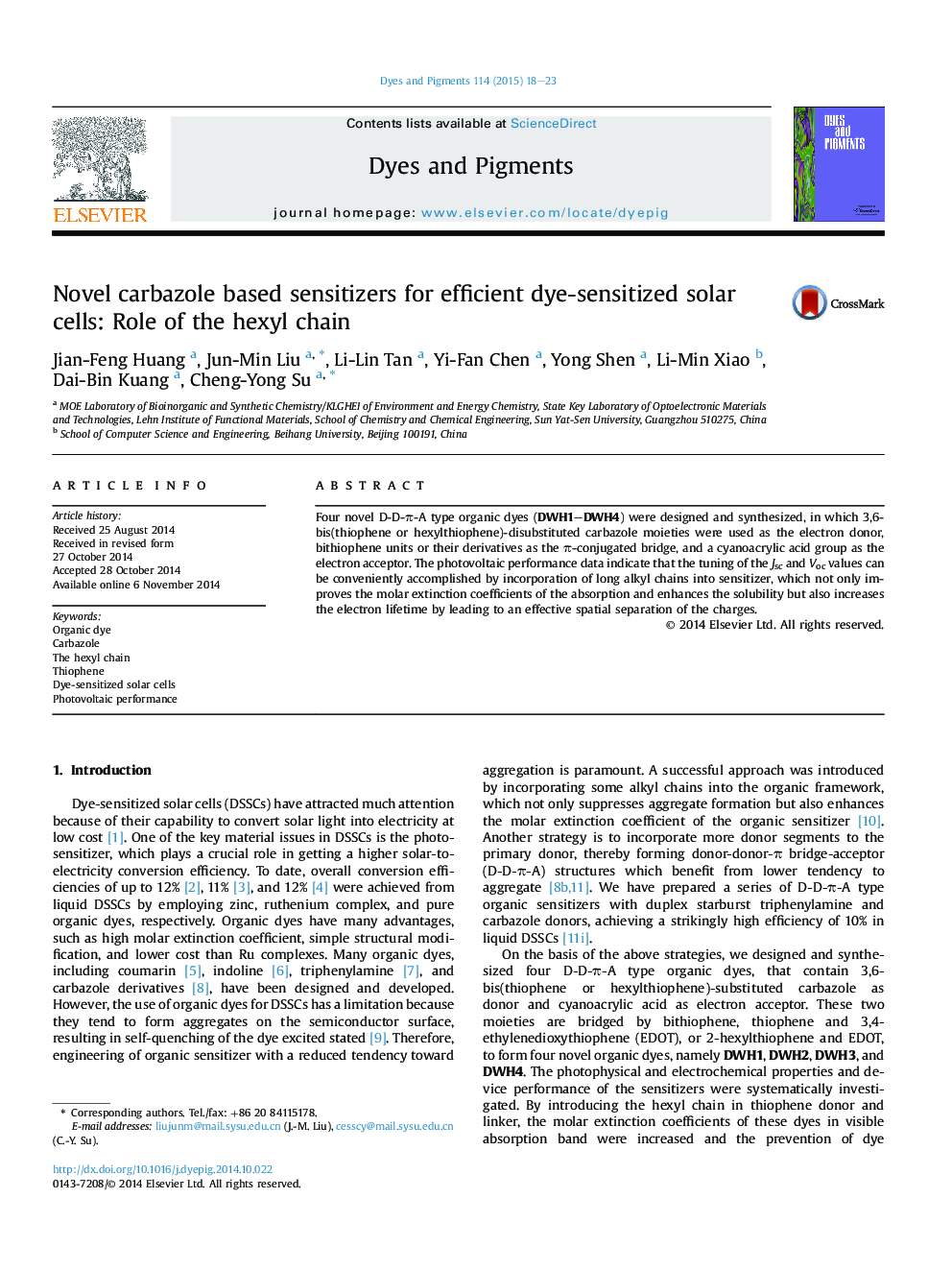| Article ID | Journal | Published Year | Pages | File Type |
|---|---|---|---|---|
| 175974 | Dyes and Pigments | 2015 | 6 Pages |
•Organic D-D-π-A type dyes based on carbazole and thiophene were synthesized.•Incorporation of long alkyl chain enhances the molar extinction coefficients.•Introduction of long alkyl chain suppresses the charge recombination with electrolyte.•The properties of the dyes were enhanced by introducing the EDOT group in sensitizer linker.
Four novel D-D-π-A type organic dyes (DWH1–DWH4) were designed and synthesized, in which 3,6-bis(thiophene or hexylthiophene)-disubstituted carbazole moieties were used as the electron donor, bithiophene units or their derivatives as the π-conjugated bridge, and a cyanoacrylic acid group as the electron acceptor. The photovoltaic performance data indicate that the tuning of the Jsc and Voc values can be conveniently accomplished by incorporation of long alkyl chains into sensitizer, which not only improves the molar extinction coefficients of the absorption and enhances the solubility but also increases the electron lifetime by leading to an effective spatial separation of the charges.
Graphical abstractNovel carbazole based dyes with long alkyl chains have been synthesized and characterized. The electro-optical properties of these dyes can be tuned by changing the π-linker structures. Incorporation of long alkyl chains into sensitizer not only enhances the molar extinction coefficients of the absorption but also suppresses the charge recombination with electrolyte.Figure optionsDownload full-size imageDownload as PowerPoint slide
